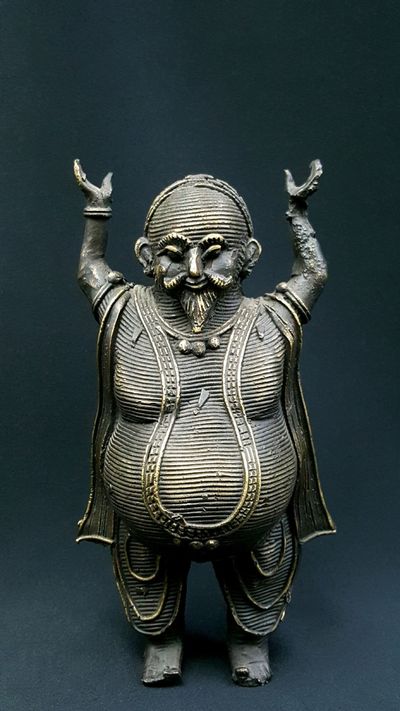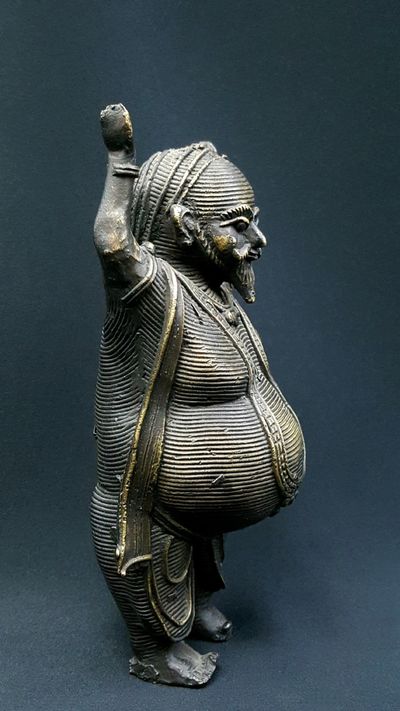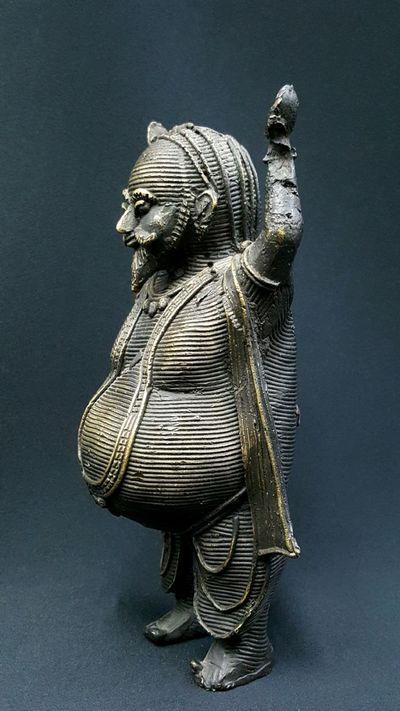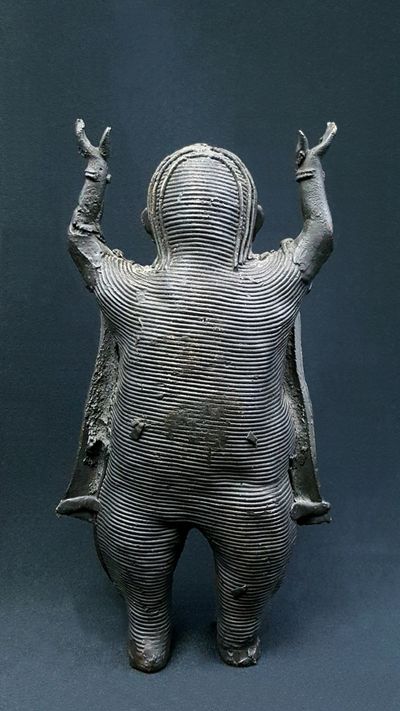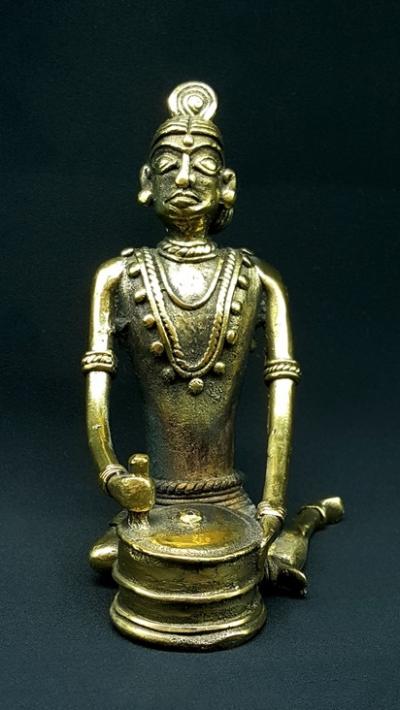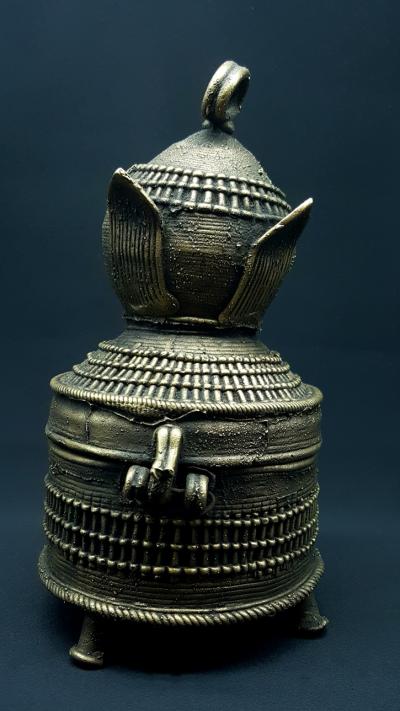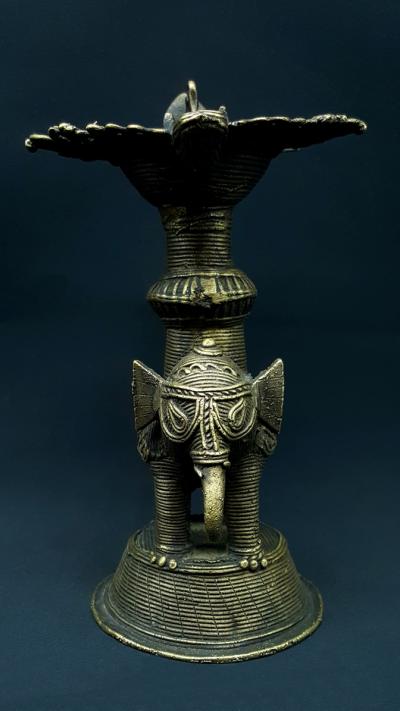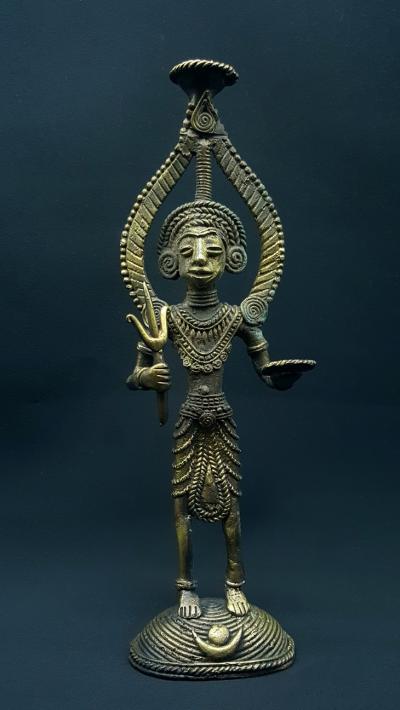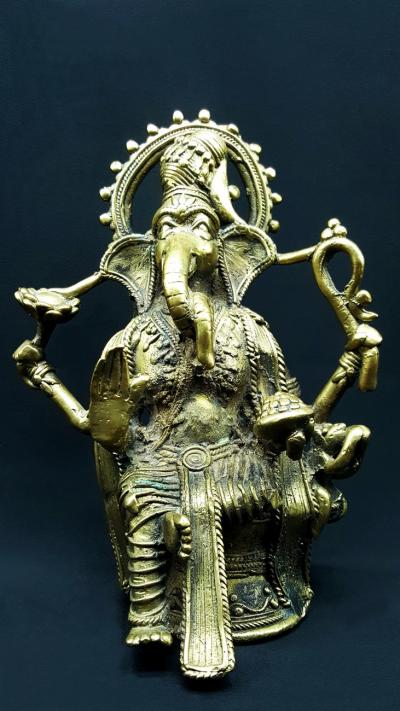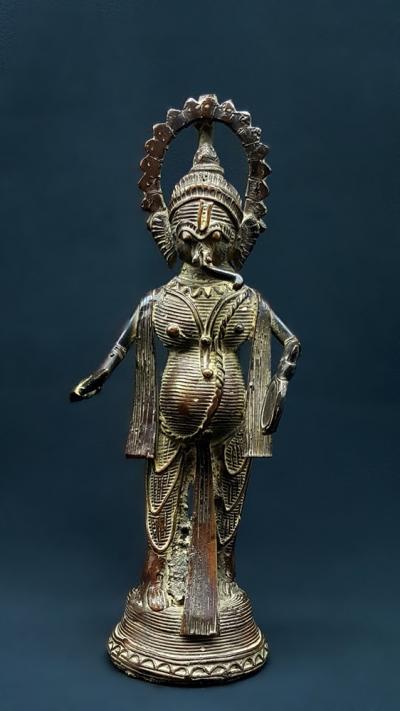Statue Kubera
Richesse et Prospérité
€189.00
Kubera, en sculpture, est rarement représenté sous cette forme et il est peu présent dans l’art Dokra : riche, prospère, il est à l’aise et le proclame. En savoir plus...
Hauteur : 16 cm
Poids : 0,6 Kg
Art tribal
Technique de la cire perdue - Alliage cuivreux
Origine : Uttar Pradesh - Inde
Livraison gratuite UE, Norvège et Suisse
Description
L'art tribal
Les tribus, pratiquant l'art Dokra, sont originaires de la région de Bastar, dans l'Inde du Sud (aujourd'hui situé dans l'État deChattisgarh), elles ont émigré plusieurs siècles auparavant et se sont installées un peu partout en Inde du Nord au Sud.
La plupart ont gardé leur tradition (art culinaire, vestimentaire, fêtes...) et leur religion animiste.
L'art Dokra : un savoir millénaire dans la fabrication de statues en laiton
Cet art tribal indien artisanal n'a pas changé depuis des millénaires (+ de 4000 ans) et la technique utilisée est toujours celle de la cire perdue : un modèle grossier en argile est réalisé puis recouvert de cire par l'artiste qui va lui donner sa forme définitive avec ses détails. L'ensemble est à nouveau recouvert d'un mélange argileux puis chauffé dans un foyer ouvert où un alliage cuivreux sera coulé. voir Blog
Les objets produits par les artistes Dokra peuvent être de nature usuels : coupelle, bougeoir... des instruments de musiques (cuivres), ou bien artistiques tels que des bijoux, des animaux : chevaux, éléphants, tortues..., des statues d'hommes et femmes représentant des scènes de vies quotidiennes et des divinités hindous adoptées par les tribus : Ganesh, Lakshmi, ...
Posture Debout,bien campés sur ses pieds dans une attitude solide et détendue à la fois. Les bras en l'air englobent tout voir supportent l'univers : Kubera est aussi le maître des mondes souterrains et des génies qui le peuplent: les Yakshas.
Son ventre, tel celui de Ganesh, est proéminent : symbole de prospérité, de force vitale et profonde.
Vêtements Sur les cotés, les pans de son châle, légèrement ondulés renforcent l'impression d'aisance qu'il dégage.
Kubera, en sculpture, est rarement représenté sous cette forme et plus généralement il est peu présent dans l'art Dokra : riche, prospère, il est à l'aise et le proclame.

